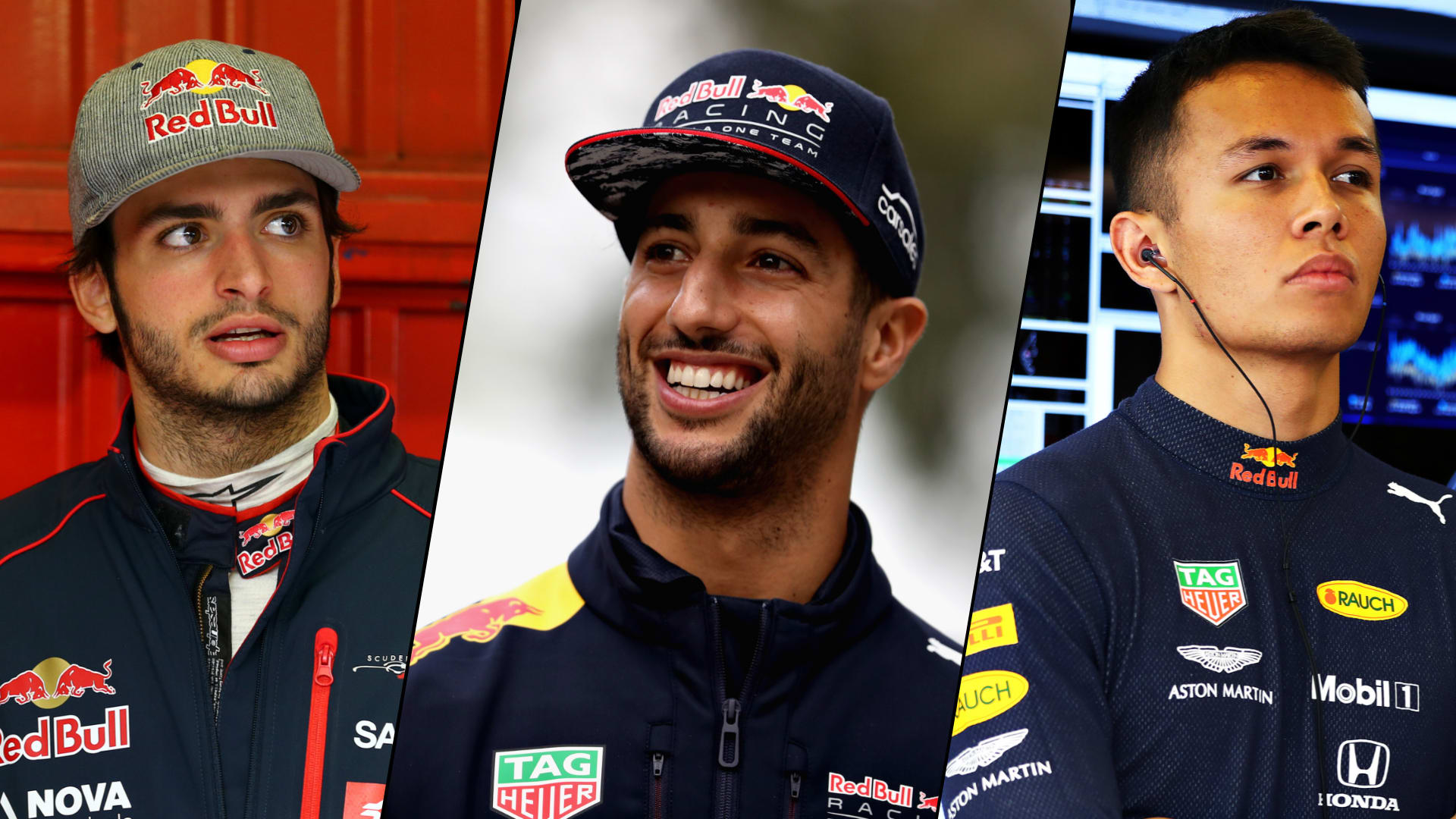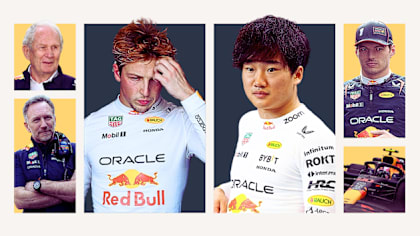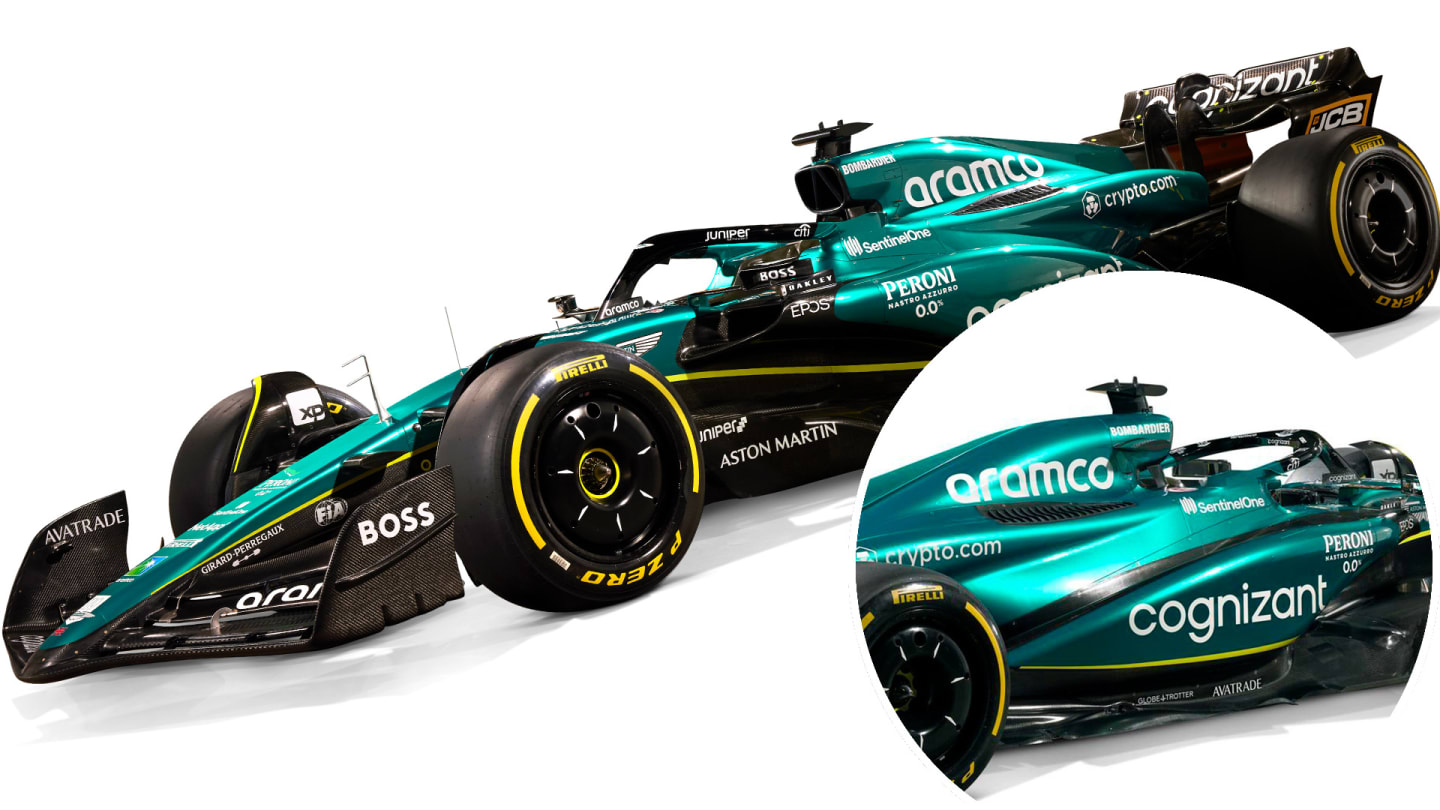
Technical
TECH ANALYSIS: Unpacking the 'aggressive' new Aston Martin AMR23

Share

Aston Martin have taken the covers off their brand-new challenger, the AMR23 – but how different is their new design compared to last year's car? F1 technical expert Mark Hughes has a look...
Aston Martin’s new AMR23 embodies a clear break in technical leadership for the team, with Dan Fallows having been involved in the new car’s gestation from the start while previous chief Andy Green has moved on to a non-F1 part of the team, heading up Aston Martin Performance Technologies.
Fallows has overseen an extremely aggressive approach to improving on the team’s 2022 performance. Not only is it aerodynamically quite different, but the mechanical aspects have been completely overhauled and a very rigorous approach has been taken in getting the car down to the weight limit.
FIRST LOOK: Aston Martin unveil new AMR23 F1 car at Silverstone launch
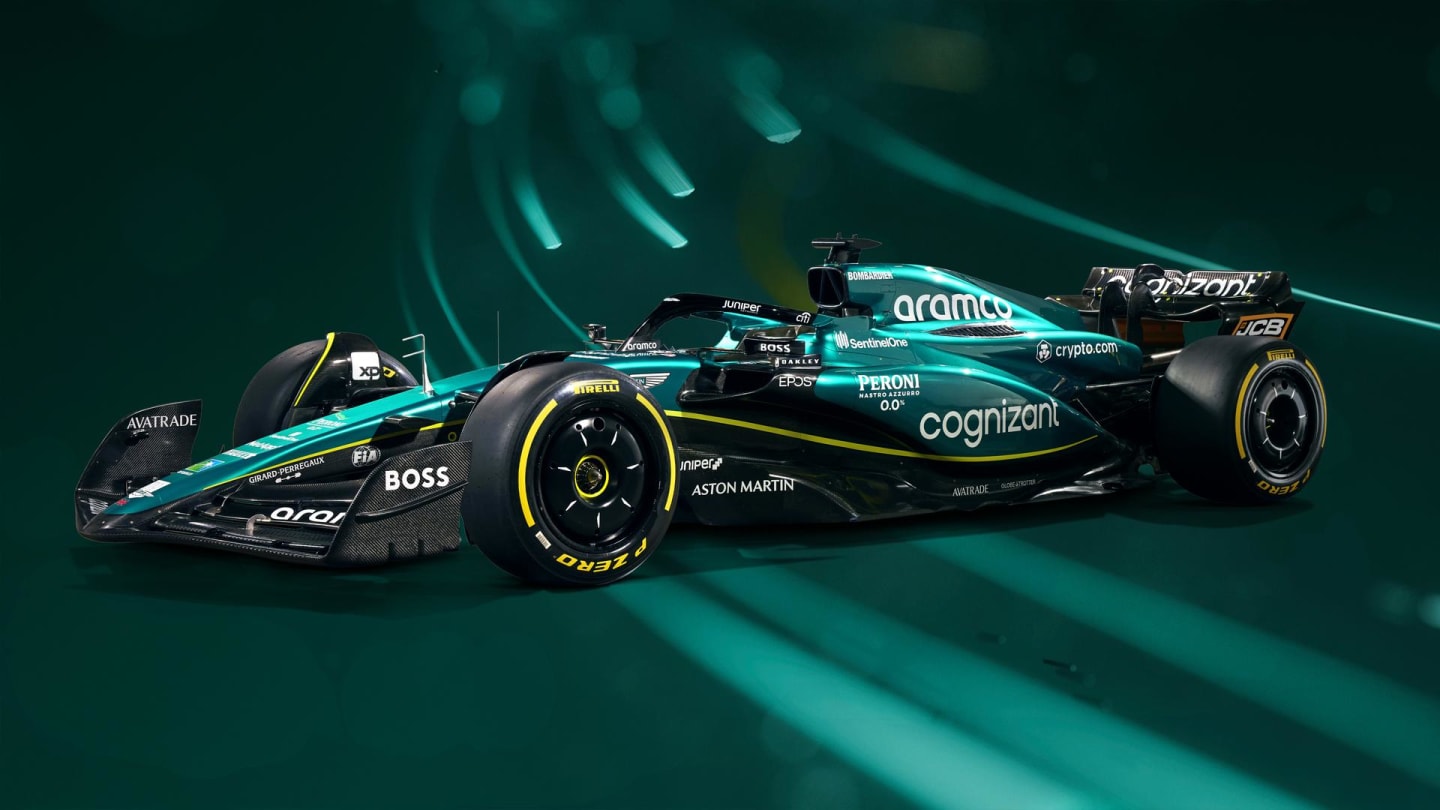
Aston Martin's new car is their first headed up by Dan Fallows
Visually, the car bears a very strong visual resemblance to last year’s Red Bull RB18 in its post-Monza update form. The sidepod and engine cover contours are remarkably similar.
Last year’s Aston AMR22 was given a major bodywork update in time for the Spanish Grand Prix and that car had a close visual similarity to the original RB18.
But the Aston’s development was essentially switched off mid-season as Red Bull’s kept going, with a new sidepod and subsequently a bodywork cooling ‘cannon’ along the side which together with the ramped-down sidepod beneath brought an aerodynamic benefit to the airflow making its way to the sensitive area between the rear wheels.
That particular Red Bull update has proved an extremely influential one and versions of it can already be seen on several 2023 cars. But none quite so faithful as the version seen on the new Aston Martin – at least in profile.
READ MORE: Williams continue Red Bull-like trend with FW45 design
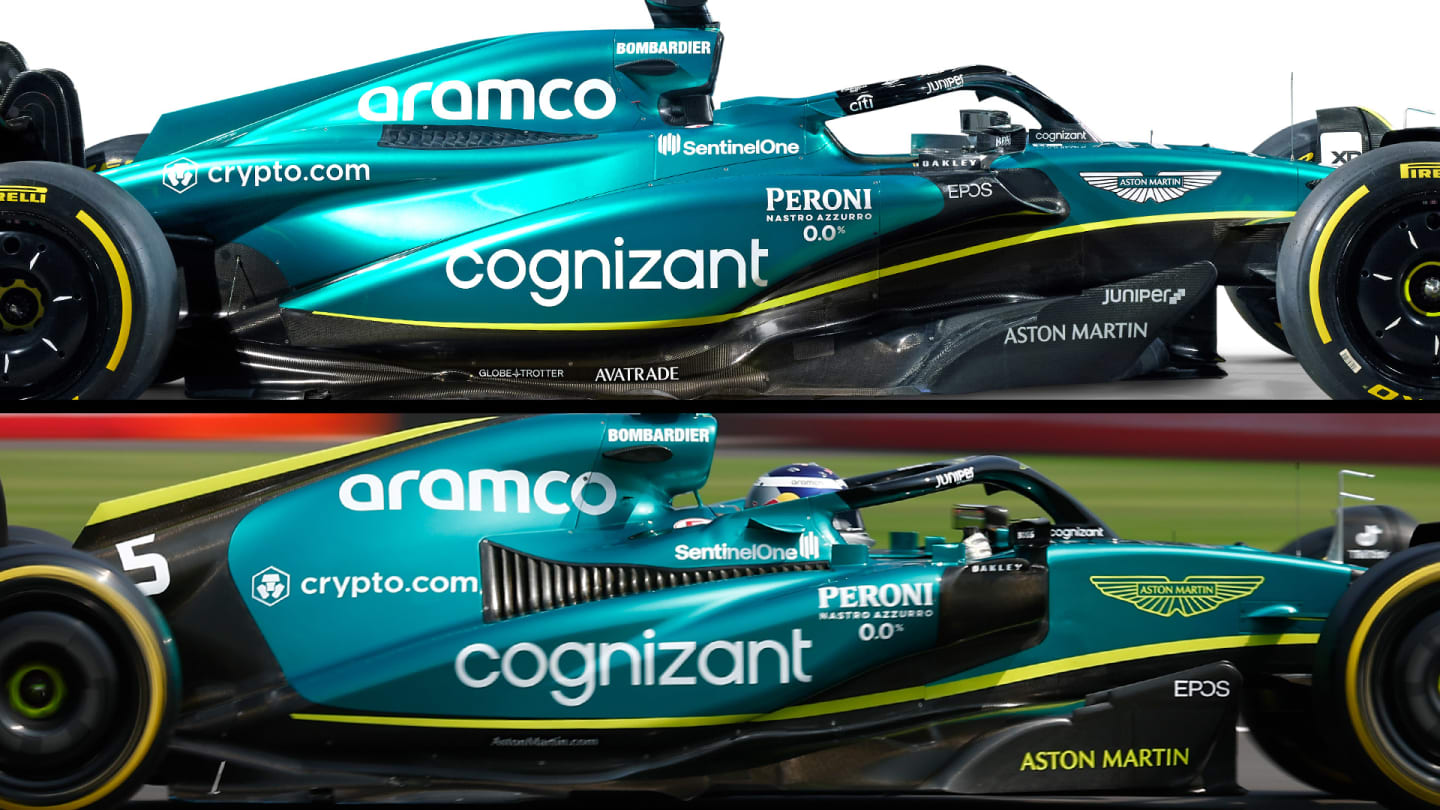
AMR22 (bottom) in its post-Spain form. Contrast the front of the sidepod with the much more svelte version on the new AMR23 (top).
In three-dimensional view it can be seen that on the sidepod tops there is a Ferrari-like ‘bathtub’ depression within which cooling louvres are sited (a feature shared with the ’23 cars of Haas and McLaren). There are further louvres upon the shoulders inboard of the depression, suggesting radiators have been moved, as on every new car so far seen.
Although last year’s bodywork upgrade brought the AMR22 visually into line with the Red Bull of the time, Aston was still limited in how far it could go in fully exploiting that philosophy by the hard points of the existing cooling layout. To have redesigned this would have taken the team perilously close to the cost cap.
With the new AMR23 Aston appears to have made the required changes beneath the skin to place the floor inlets more favourably. This is a common theme of the 2023 generation. Expect a better trade-off between maximum downforce and consistent balance through the corners.
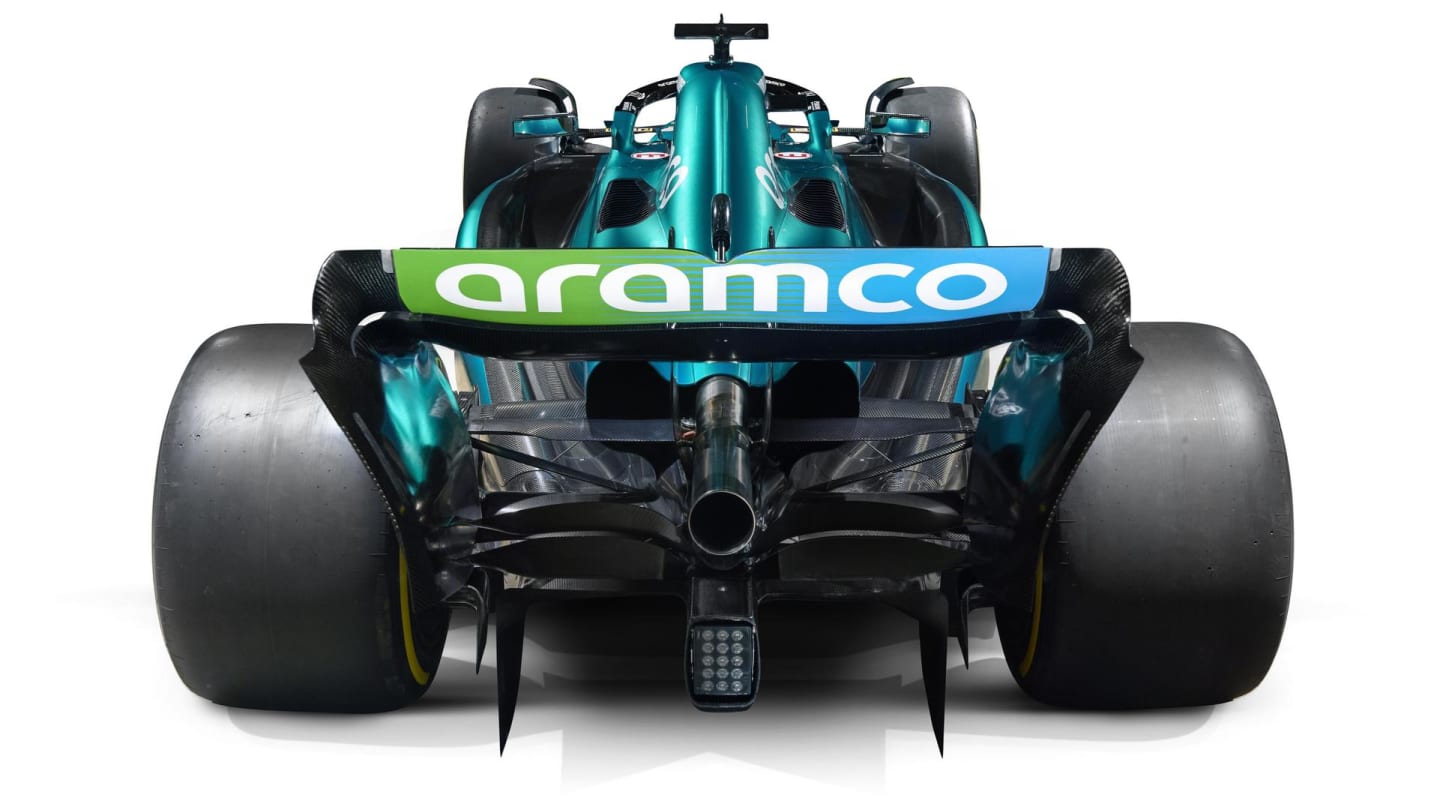
Sidepods featuring a 'bathtub'-like depression feature on Aston Martin's new car
Up front there is a new slimmer and flatter nose which is quite Mercedes-like. The previous pushrod front/pullrod rear suspension type has been retained (the opposite choice made by Red Bull last year) but the geometries have been changed.
The rear suspension and gearbox (and power unit) are still supplied by Mercedes.
LIVESTREAM: Watch as Aston Martin show off their brand-new AMR23 F1 car
Last year the rear suspension did not give adequate travel to help these teams in their struggle to contain the vertical bouncing endemic to the then new regulations. It can be assumed that problem has been designed out with this year’s iteration. Up front, the anti-dive layout of the wishbones appears more extreme. This will keep the car’s attitude to the air more consistent.
There is an unmistakeable sense of optimism from within the team about this car’s prospects. Let’s see if it’s justified.
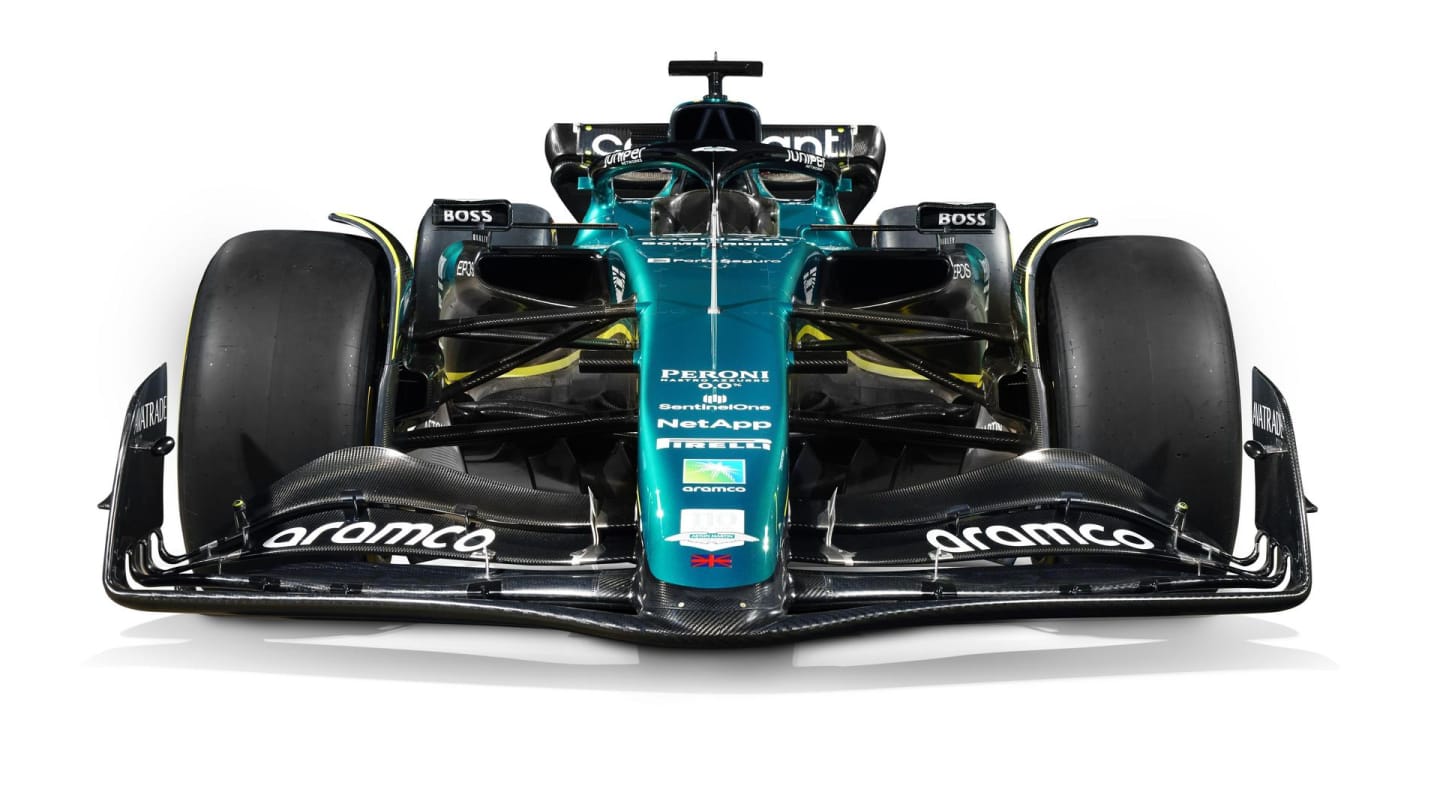
A front view of the AMR23 shows extensive development
More technical analysis of the 2023 F1 cars
- Ferrari's 2023 SF-23 – A complete redesign or subtle evolution?
- Mercedes stick to their guns on unique sidepod design with new W14
- Is it a case of evolution or revolution for McLaren’s new MCL60?
- What we learned from a first look at the brand-new Alfa Romeo C43
- Unpacking the 'aggressive' new Aston Martin AMR23
- The key design features revealed by Haas’s shakedown runs in the VF-23
- Why AlphaTauri’s livery launch gave us some fascinating clues about the AT04
- Williams continue Red Bull-like trend with FW45 design
YOU MIGHT ALSO LIKE
FeatureF1 Unlocked PALMER: Why has Lawson struggled at Red Bull – and should they swap him for Tsunoda?
News ‘It’s tough’ – Lawson shares first message after Red Bull seat swap with emotional social media post
Video LIVESTREAM: Watch all the action from Round 10 of the 2025 F1 Sim Racing World Championship as the drivers tackle Interlagos
Feature ANALYSIS: Why Red Bull decided swift action was needed as Tsunoda is promoted in place of Lawson
